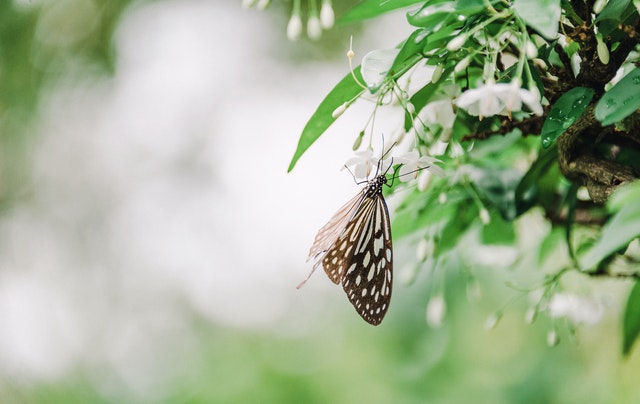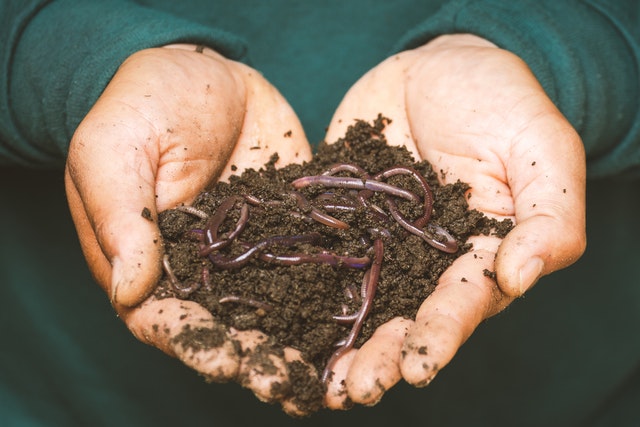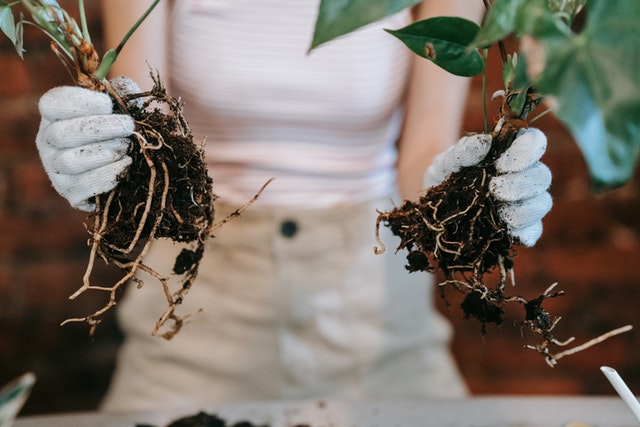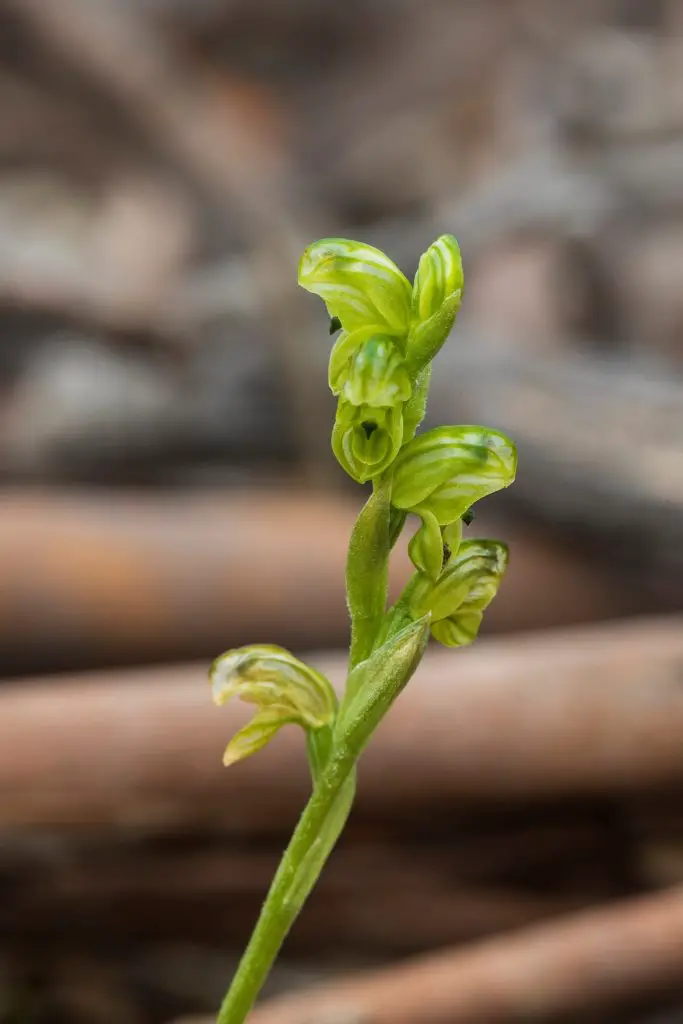If you are looking for a hobby plant to grow indoors, the swan orchid may be worth considering. This plant is one of the over 20,000 species of orchids, which is known for its elegant flowers with a swan-like shape.
Although this plant grows well outside, it can do well as a houseplant with proper care.
Wondering why it’s called a swan and whether this plant is ideal for you? If so, this article is for you. Whether you’re an experienced orchid grower or a newbie, the swan orchid’s unique and striking appearance is sure to captivate you and add a touch of elegance to your indoor garden.
Read on to learn more about the swan orchid, including its history, origin, features, basic care, and more. At the end of this article, you will decide whether it is worth adding to your collection of orchids.
What is a Swan Orchid?

Also known as Cycnoches, the swan orchid is a beautiful orchid species that do well in a hot and warm climate. What stands out most about this type of orchids is that they are unisexual, meaning that they have separate male and female flowers on different plants.
Although it is difficult to determine the sex of the flowers, the male flowers have a swan neck and are usually produced in conditions with high temperatures and intense light.
Generally, swan orchids thrive well when kept outside in tropical conditions. This plant thrives in xerophytic areas with two different seasons. They love warm and hot conditions in which they can mature in just 6 months.
Nevertheless, they can be kept indoors as houseplants. They usually bloom during the fall and spring seasons. Once the flowering is completed, the swan orchid needs to go through a dry period. During this time, you won’t need to water or fertilize your plant.
The blooming produces beautiful flowers that come in different colors including yellow, green, white, bronze, and deep red.
Origin and Classification
The Swan orchid is a genus from sympodial epiphytic and the Catasetinae group. This orchid genus has about 34 to 39 species and this depends on the origin.
Originally, swan orchids hail from South America. Today, this plant is nearly everywhere and is most commonly found in countries like Mexico, Brazil, and Bolivia. They are found on trees in the Savanna forests or on logs as terrestrials.
Features of Swan Orchid
Several features are associated with the swan orchid plant that makes it stand out from other orchids. Some of its common features include:
1. Height
In general, the swan orchid’s height and size may vary. Regardless, a medium-sized orchid plant can measure 30 cm tall. Also, this plant comes with leaves that are strap-shaped and can measure up to 8 inches long. Overall, the height of the plant and the leaves depend on its species, out of the 40 accepted species.
2. Flowers & Leaves

The swan orchid produces both the male and female flowers under the right condition, something that is unusual with most orchids. The male flowers have a notable appearance of a tiny swan that has tiny wings and a long curved neck. Actually, this is where this plant got its name from.
Usually, swan orchid flowers reach maturity at 6 months after which they flower twice every year. The first blooming happens in the fall season while the second flowering takes place in the spring.
The swan orchid’s flowers are delicate and can get bruised easily. For this reason, it is very crucial to take care of them to keep them looking fresh.
3. Foliage and Stem
The swan orchid has a stem known as pseudobulbs where the buds and flowers grow in. The bulb-like stems are thick and fleshy and this is where new plants grow from. If the stems are withered, they won’t produce flowers.
That is why it is advisable to cut the orchid stem at the base after blooming. For the foliage, this plant has green elliptical leaves that measure up to 30 cm long.
4. Evergreen
While still young, the sepals and petals of this plant are green. However, the color may change to yellow or bronze as they age. The green and firm leaves are great for pruning if you want your plant to bear much flowering. This is because it shows that the plant is healthy enough.
Basic Care of Swan Orchid
Just like most plants, the swan orchid needs to be properly cared for to thrive well. Ensuring the right care for your swan orchid can help to keep them looking fresh and healthy for longer. Here are some basic swan orchid care guidelines to help ensure that your orchid plants are healthy.
1. Size & Growth
The swan orchids have pseudobulbs that measure between 8 inches and 20 inches or more. The pseudobulbs have flowers that measure approximately 1 inch to over 6 inches and spikes that range in number with some producing up to 6 spikes. Overall, this plant can grow and mature in just 6 months.
2. Light Requirements
Swan Orchids are usually grown in bright light. This is particularly true for female flowers because brighter light helps them bloom. If grown in partial shade with protection from direct sunlight, Cycnoches orchids tend to produce male flowers.
Generally, house orchids need to be exposed to brighter light for the better part of the day. To ensure this, you can place them 2 feet from a window. If you live in a warm climate, placing them outside can be ideal.
3. Water Requirements

Cycnoches orchids need a lot of water during the spring growing season. You need to ensure that the soil is moist most of the time to help the new leaves to sprout and grow tall.
When they become dominant, these plants may need less water about once or twice weekly. Of course, this will depend on the climate of your area.
Thereafter, you need to check your plant to ensure that it is well-watered, especially during summer. This helps to ensure proper air circulation. Also, since swan orchids are more prone to spider mite attacks during summer, normal watering prevents this and keeps them healthy.
4. Soil Requirements
Moist soil is best for growing swan orchid plants. Besides ensuring moist soil with good drainage, you need to find the right medium for growing your swan orchid. The most common growing media for this type of plant includes potting soil, rocks, sphagnum peat moss, fir bark or redwood, charcoal, coal, and many more.
5. Sunlight Requirements
There is a need to place swan orchids in an environment with divergent sunlight. This is important because exposure to too much sunlight and other extreme weather conditions can cause the plants to lose their life. If you intend to grow your plants outside, it helps to grow them beneath trees to ensure ample shade.
6. Temperature & Humidity
Swan orchids need a warm temperature to bloom and have long-lasting flowers. In general, these plants thrive well when the daytime temperatures range between 70 and 80 degrees F and 60 to 62 degrees F at night.
The high temperatures during the day enable the plants to generate energy in the form of carbohydrates. On the other hand, the energy is stored at night when the temperatures are low to help with the optimal growth rate.
Humidity is also vital with the ideal rate for the swan orchids ranging from 50% to 70% in the daytime. A shallow dish with water and pebbles will do well in maintaining the right humidity level during summer.
7. Drought & Disease Requirement
Swan orchids are prone to spider mite attacks, especially during the summer season. Spider mites are small creatures that resemble spiders and do well in very hot conditions. These creatures have piercing mouths that they use to attack your swan orchids.
This causes the plants to have a yellow appearance. Spider mites also create webs around infested plants and this can cause the leaves to drop. Worse still, it can lead to the death of the plant.
Other common diseases that can affect this plant include Pythium and Phytophthora Root Rot, bulb rot, and leaf spots by fungi or bacteria.
8. Toxicity
Like most orchid species, the swan orchid is not toxic to humans, cats, or dogs. Therefore, they are very safe and good houseplant options to have if you have small children or pets in your home. However, chewing these orchids can cause vomiting or a tummy ache, or discomfort. However, it doesn’t cause any serious complications.
9. Fertilizing

For your swan orchid to thrive well, there is a need to grow them in soil with a well-balanced fertilizer. Ideally, they are heavy feeders. A natural option is coffee grounds or you can opt for organic fertilizer, which should be used weekly or every two weeks depending on the manufacturer’s instructions.
A fertilizer that is high in nitrogen is also a good option during the growing season. It is, however, to stop using fertilizer after the flower spikes start to show.
10. Potting & Repotting
Good drainage is very crucial when it comes to potting swan orchids. For these plants to thrive, they need adequate air movement around the roots. Hence, it helps to grow them in clay pots with adequate drainage.
It is highly recommended to choose an orchid pot with vertical slits on the sides to ensure this. Nevertheless, an orchid pot with a drainage hole can still get the job done.
You also need to ensure that the pot you choose can accommodate the roots and allow growth of about two years. Don’t forget to report your plant every year at the start of the growing season.
Something else to know about swan orchids is that they thrive well in sphagnum moss or fine fir bark. You Can choose to grow them on another plant or mount them on a stand, with the latter requiring more water at least 2-3 times daily.
11. Pruning Requirements
You need to prune your swan orchid after blooming has occurred and the flowers have faded. Pruning the dead stems and roots not only promotes flowering but also ensures the overall health of your plant.
It always helps to ensure that the leaves are green and healthy enough for pruning; otherwise, you may need to wait until the plant has green leaves.
How to Propagate Swan Orchid

Swan orchid seeds are small and this means that the plants may not be grown from them and propagating them can be very challenging. What’s more, these seeds lack food reserves.
The cells are placed there until the new plants are generated from the parent plant THROUGH meristem culture.Alternatively, the new orchid plants can be developed in the laboratory of large commercial growers. Propagation can also happen by separating the pseudobulbs.
Step 1: Prepare the Ideal Environment
To successfully propagate swan orchid, you need to have the right environment. This means the right temperature, humidity, water, and light.
Step 2: Clean and Store the Seeds
When you have brought your seeds, you now need to clean them using hydrogen peroxide. Then store the seeds in a small container and place in cool, dry areas.
Step 3: Create an Agar Medium
You need to make an agar medium where the seed germination process will take place. For this one, you can buy a swan orchid seed sowing kit. You can also use agar powder and hot water.
Step 4: Prepare a Sterile Environment
Use bleach to sterilize the environment and get rid of fungal spores and bacterial cells. This is important because bacteria, algae, and fungi can hinder swan orchid germination.
Step 5: Sow the Seeds
Put the seeds, medium, flasks, and eyedropper in a glove box and spray with bleach. Then fill the eye dropper with hydrogen peroxide and close the flask. Place it in a ziplock bag and place it near a window.
Common Problems in Caring for Swan Orchid
When caring for your swan orchid, you may encounter several issues. They include:
1. Pest
Pests are some of the major issues you are likely to encounter when caring for your swan orchid. This plant is prone to pest problems like spider mites, whiteflies, and Mealybugs.
At times, it can be difficult to spot these pests because they blend with the environment. Nonetheless, a common sign of pest infestation is yellowing in the foliage. To overcome the pest problem, you need to continually spray your plants and apply insecticidal soap.
2. Diseases

Fungal and bacteria can cause diseases in swan orchids because of high humidity levels. The most common diseases that are likely to affect the swan orchids include bulb rot and Pythium and Phytophthora root rot. Sometimes, you may need to remove the affected tissue and the treat the area with a bactericide or fungicide.
3. Environmental Problems
Like other orchids, swan orchids are sensitive to environmental changes due to the fact that they are epiphytes. Too much lighting can lead to lighting while poor lighting conditions can cause dark foliage. You also need to find the right medium and the most suitable temperature to ensure that you plant grows in the right conditions for proper growth.
4. Spots on Buds and Leaves
It is common to see spots on leaves and buds due to physical damage. In other instances, the spots can be as a result of fungal infection and this is likely to spread to other parts.It helps to cut or remove the tissue that is affected before treating the plant with fungicide or bactericide.
Learn more in a related post: Syngonium Yellow Plant, Grow & Care Guide 2022
Outro
If you are an orchid lover, then swan orchids can make adorable houseplants for your needs. This popular orchid species thrive well outside and it can also do well inside with the right care and attention. You just need to find the right medium for growing your plant and ensure the right light, temperature, and water. Don’t forget to watch out for pests and disease infestations.
Buying Option
The Swan Orchid plant can be purchased on Amazon and Etsy. The price for the plant varies. To get the best deals, it helps to check both marketplaces and compare their offerings.
Click on the links below to check the prices.
Check Price on Amazon
Check Price on Etsy
Frequently Asked Questions
What type of orchid species does the swan orchid belong to?
Swan orchids are botanically known as Cycnoches, which is an epiphytic genus of orchids known as sympodial. They belong to the Orchidaceae family and the subfamily of Epidendroideae.
This orchid species has approximately 34 to 39 accepted species of orchids. A common swan orchid species is the Cycnoches chlorochilon, which is known for producing the largest flowers.
What is the best way to care for the swan orchid plant?
Basic care of your swan orchid plant is crucial if you want it to remain healthy and serve you for long. Here are some basic steps on how to care for your swan orchid.
Water your swan orchid plant more generously during the new growth in springtime.
Once it starts to bloom, reduce the amount of watering.
Place your swan orchid plant in a pot or mount to ensure optimal air movement.
If you are doing pot mixing, always check the soil before watering the plant to know whether they need to be watered or not.
Apply high-nitrogen or a well-balanced fertilizer during new growth. The recommended time for feeding your plants is weekly after watering them. Once they mature, you can decrease the intervals of fertilizing them to monthly or bi-monthly and stop when they attain dormancy.
Once the swan orchids lose their leaves, refrain from watering or fertilizing them.
Is it okay if I use ice cubes to water my orchid?
While you can use ice cubes to water your swan orchids to prevent overwatering, it is not recommended. This is because it can actually lead to underwatering.
In other instances, the use of ice cubes on your orchid plants can lead to overwater, especially if you use pots with poor drainage. When the potting compound gets soggy, it can lead to decayed roots, affecting the growth of your plant.
What’s more, the freezing temperatures of ice cubes can be harmful to the plants, which do well in warm climatic conditions.

Hey, I’m Lisa and I’ve been an avid gardener for over 30 years. I love writing, talking and living in the garden! Feel free to connect with me on my socials below

